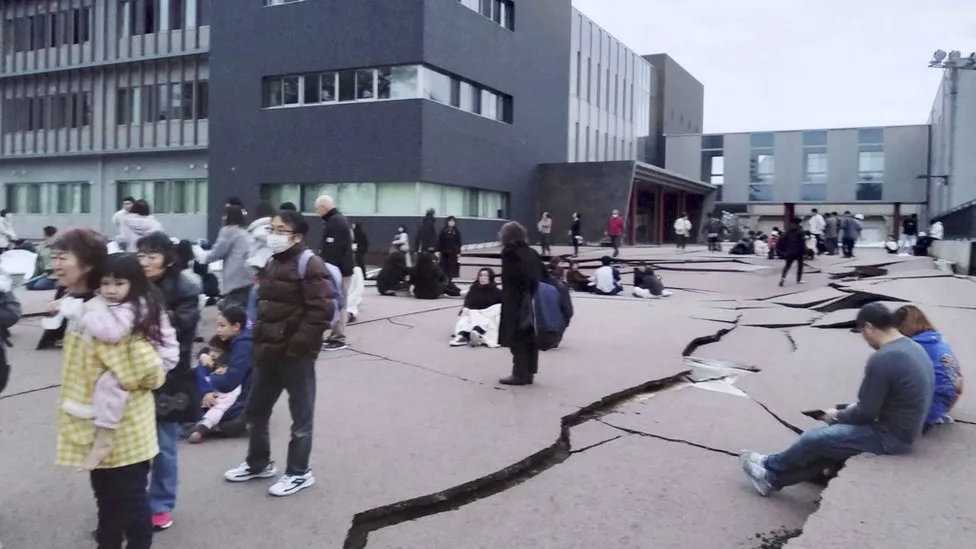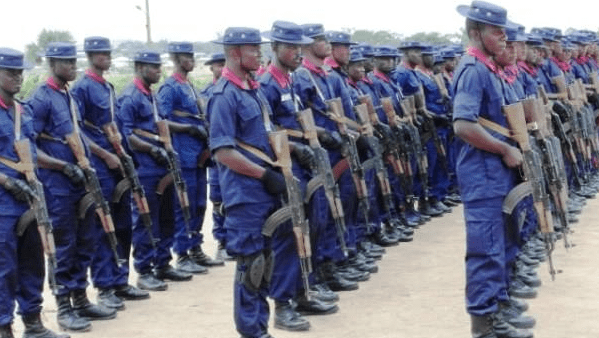Thousands of people in Japan are spending the night in evacuation centres after a powerful earthquake.
At least two people are feared dead, Kyodo news agency reports, with the toll likely to rise in the coming days.
Dozens of buildings have collapsed in several towns, trapping an unknown number of people beneath the rubble.
The 7.6-magnitude quake struck at around 16:10 local time (07:10 GMT) on Monday. Tsunami warnings were issued and later downgraded.
About 60 tremors have been recorded following the initial quake.
Jeffrey Hall, a lecturer at Kanda University, said he felt tremors for about two minutes, despite being in Yokohama, on the other side of Japan’s main island. He told the BBC that the quake was a “very, very serious thing” for Japan.
“This is the equivalent of a major earthquake and tsunami coming in the middle of Christmas dinner for British people,” he said.
A snowboarder on holiday in Japan’s Hakuba Alps said his entire hotel room shook. Speaking to Reuters, Baldwin Chia said he was concerned about avalanches but hadn’t received reports of any taking place. He said it was common to hear about earthquakes in Japan, but “you wouldn’t expect one to actually experience one.”
Joseph Tame, a Briton living in the country, told the BBC he felt the earthquake from his home just north of Tokyo – 320 miles (514km) away from the epicentre.
“The house that we’re in is about 40 years old and was shaking a fair bit,” he said.
The full extent of the damage is unlikely to be clear until Tuesday morning, but major damage to infrastructure is evident.
Officials in Suzu City in Ishikawa prefecture said several houses and power poles collapsed, according to national broadcaster NHK.
Major highways were closed near the quake’s epicentre and more than 36,000 households were left without power, according to utilities provider Hokuriku Electric Power.
The BBC’s former Japan correspondent Rupert Wingfield-Hayes – who was reporting from Taiwan – said several hundred metres of the main expressway between the cities of Toyama and Kanazawa had been ripped apart by a landslide.
Video from Uchinada, also in Ishikawa prefecture, showed the surface of a road rippled and cracked. Damage to the Onohiyoshi Shrine in Kanazawa was also pictured.
Initially, a major tsunami warning was issued for the coastal Noto area in Ishikawa – near the quake’s epicentre – with authorities saying waves could reach heights of 5m (16ft).
Local reports said this was Japan’s first such warning since 2011, when a powerful earthquake tore through the north-east and unleashed waves up to 40m high.
The waves that actually hit the Sea of Japan coastline in Ishikawa on Monday were not much more than a metre high.
The major warning was later downgraded to simply a warning, and then an “advisory”, NHK reported. Nearby Niigata and Toyama prefectures were also on alert.
Japan is one of the most seismically active nations on Earth, owing to its location on the so-called Pacific Ring of Fire, where many tectonic plates meet. The constant threat of earthquakes has led Japan to develop one of the world’s most sophisticated tsunami warning systems.
There are several nuclear power plants in the affected areas, however Japan’s nuclear authority said there was “no risk of radioactivity leaking” from the facilities.
South Korea’s meteorological agency and Russia also issued tsunami warnings after the earthquake.
The 9.0-magnitude earthquake which hit Japan in 2011 resulted in a tsunami – which tore through the country’s north-eastern coastal communities, killing almost 18,000 people and displacing tens of thousands.
Those tsunami waves triggered a nuclear meltdown at the Fukushima power plant, causing the most serious nuclear accident since Chernobyl.





